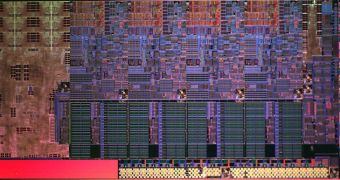It appears that the successor to the existing line of desktop and notebook Intel central processing units will allow itself to be waited upon for longer than originally anticipated.
When it comes to the central processing unit industry, Intel definitely has the largest stake there is, even though AMD has been steadily growing thanks to Fusion.
At present, Intel's desktop and notebook strategy mostly relies on the Sandy Bridge series of CPUs.
Meanwhile, the Santa Clara, California-based chip maker is developing the successor to this line, one that was supposed to debut before this year's end (late 2011).
Turns out that, as was reported at one point already, this really might not happen after all, despite other projects being accelerated (mobile chips, for one), provided reports that recently surfaced on the Internet are actually true.
Users will remember the unfortunate debacle involving a design flaw with the Cougar Point chipset, flaw that got all motherboards and notebooks base on it recalled back in Q1.
Turns out that, whether because of this or not, Intel no longer believes it will be able to exhaust its Sandy Bridge inventories in time for the original launch date of the Ivy Bridge.
The fact that tablets have been eating away at the market share of mobile computers definitely could not have helped much either.
As such, it is now said that the next-generation processor platform has been pushed back to 2012, March 2012 to be more specific.
Until that time, the outfit will probably focus more on projects of urgency, like the exascale supercomputing project recently discovered.
Of course, finishing the newest mobile processors, like the Medfield, is something that the IT giant will also focus on, since the way things have been going on the slate and smartphone market more or less dictate swift action if any result is to be met.
As for the mid to long term, Intel is bound to follow on its plan to start developing custom SoCs for non-competing corporations (Cisco, Motorola, EMC, etc.).

 14 DAY TRIAL //
14 DAY TRIAL //